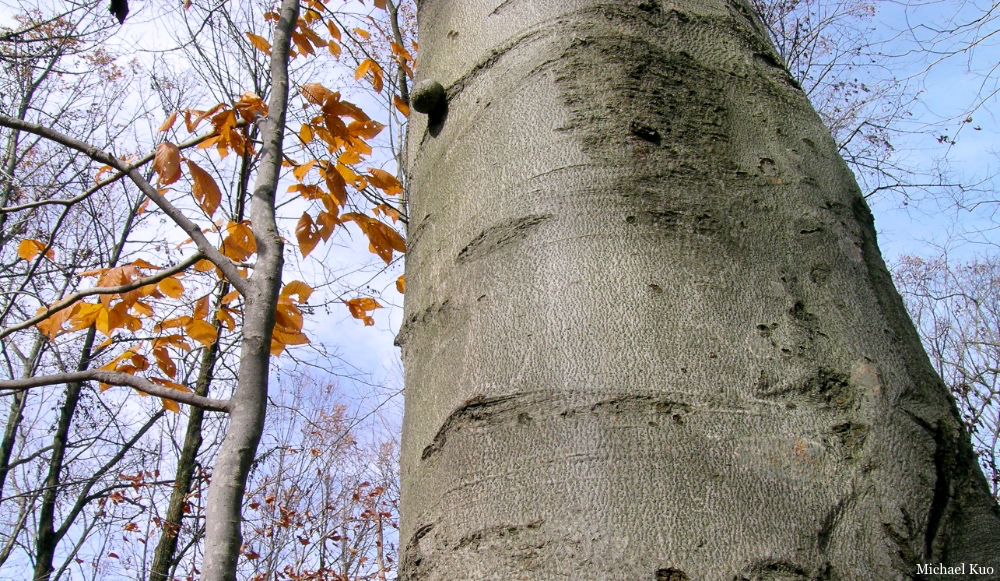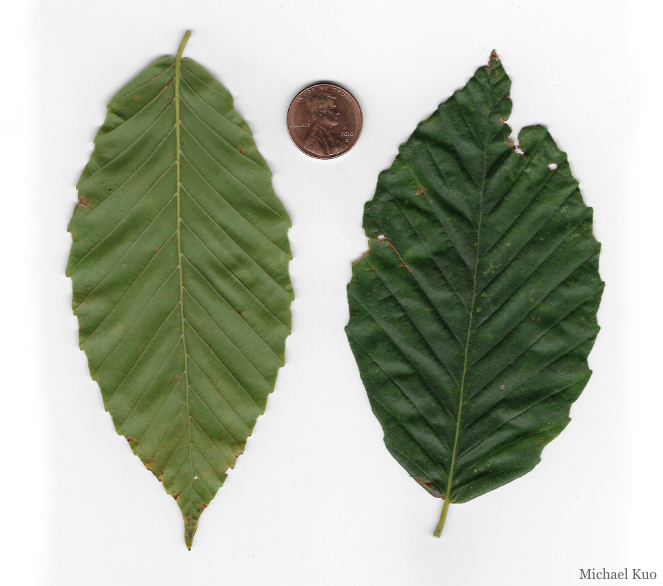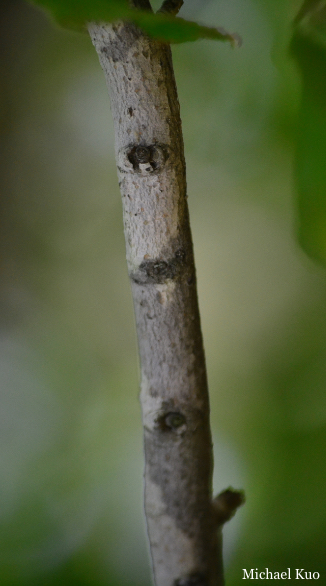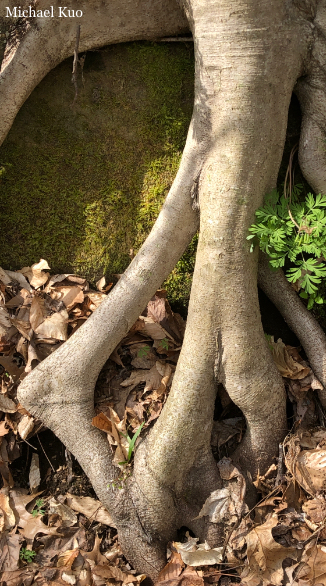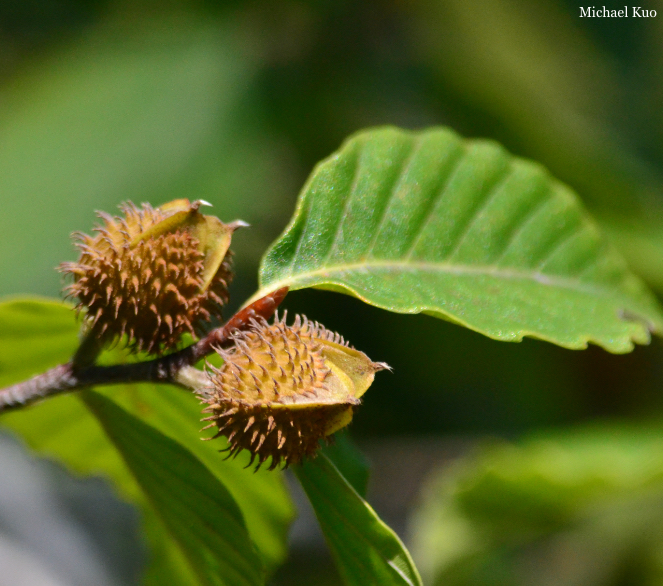 Fagus grandifolia (American beech) |
|
This glorious, beautiful tree once made up vast, dense forests in eastern North America and the Midwest, but its numbers were decimated as it was cut down in the 19th Century—not for its wood, but because it grows in rich, tillable soil. Now the tree, while far from extinct, is limited to mixed forests, where it is often associated with sugar maple or eastern hemlock. The beech-maple forests of the northern Midwest are among the most beautiful forests on our continent. Like quaking aspens, American beech trees reproduce both sexually and asexually, and one often sees a proliferation of beech saplings, cloned through the root system of a large, nearby tree, surrounding the original. Our friend Ed calls these "sons of beeches." |
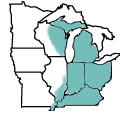 midwestern range |
|
|
|
|
|
|
|
|
|
|
